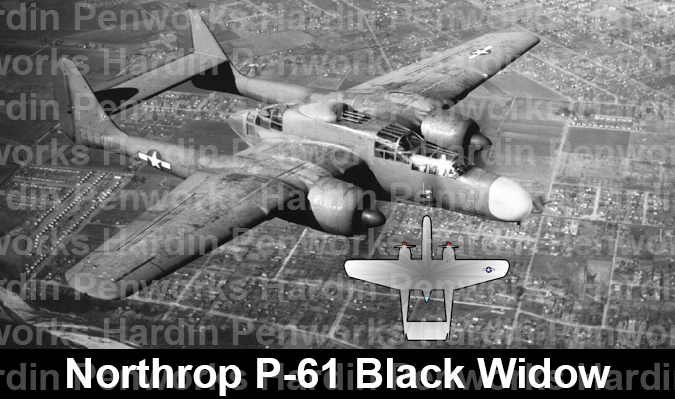Northrop P-61B Black Widow
Northrop P-61B Black Widow
Prodcut Base price with no add-on options
Low stock: 6 left
Product Price with any add-on options selected
Couldn't load pickup availability
Pre-tubed embedded blanks with Northrop P-61B Black Widow material.
All blanks will come with one COA per blank.
COAs are 4" x 6" card stock with foil COA seal.
The Northrop P-61 Black Widow is a twin-engine United States Army Air Forces fighter aircraft of World War II. It was the first operational U.S. warplane designed as a night fighter.
Named for the North American spider Latrodectus mactans, it was an all-metal, twin-engine, twin-boom design armed with four forward-firing 20 mm (.79 in) Hispano M2 autocannon in the lower fuselage, and four .50 in (12.7 mm) M2 Browning machine guns in a dorsal gun turret. Developed during the war, the first test flight was made on 26 May 1942, with the first production aircraft rolling off the assembly line in October 1943.
Although not produced in the large numbers of its contemporaries, the Black Widow was operated effectively as a night fighter by United States Army Air Forces squadrons in the European Theater, Pacific Theater, China Burma India Theater, and Mediterranean Theater during World War II. It replaced earlier British-designed night-fighter aircraft that had been updated to incorporate radar when it became available. After the war, the P-61 was redesignated as the F-61, and served in the United States Air Force as a long-range, all-weather, day/night interceptor for Air Defense Command until 1948, and for the Fifth Air Force until 1950. The last aircraft was retired from government service in 1954.
On the night of 14 August 1945, a P-61B of the 548th Night Fighter Squadron named Lady in the Dark was unofficially credited with the last Allied air victory before VJ Day. The P-61 was also modified to create the F-15 Reporter photo-reconnaissance aircraft for the United States Army Air Forces and subsequently the United States Air Force.
Share





